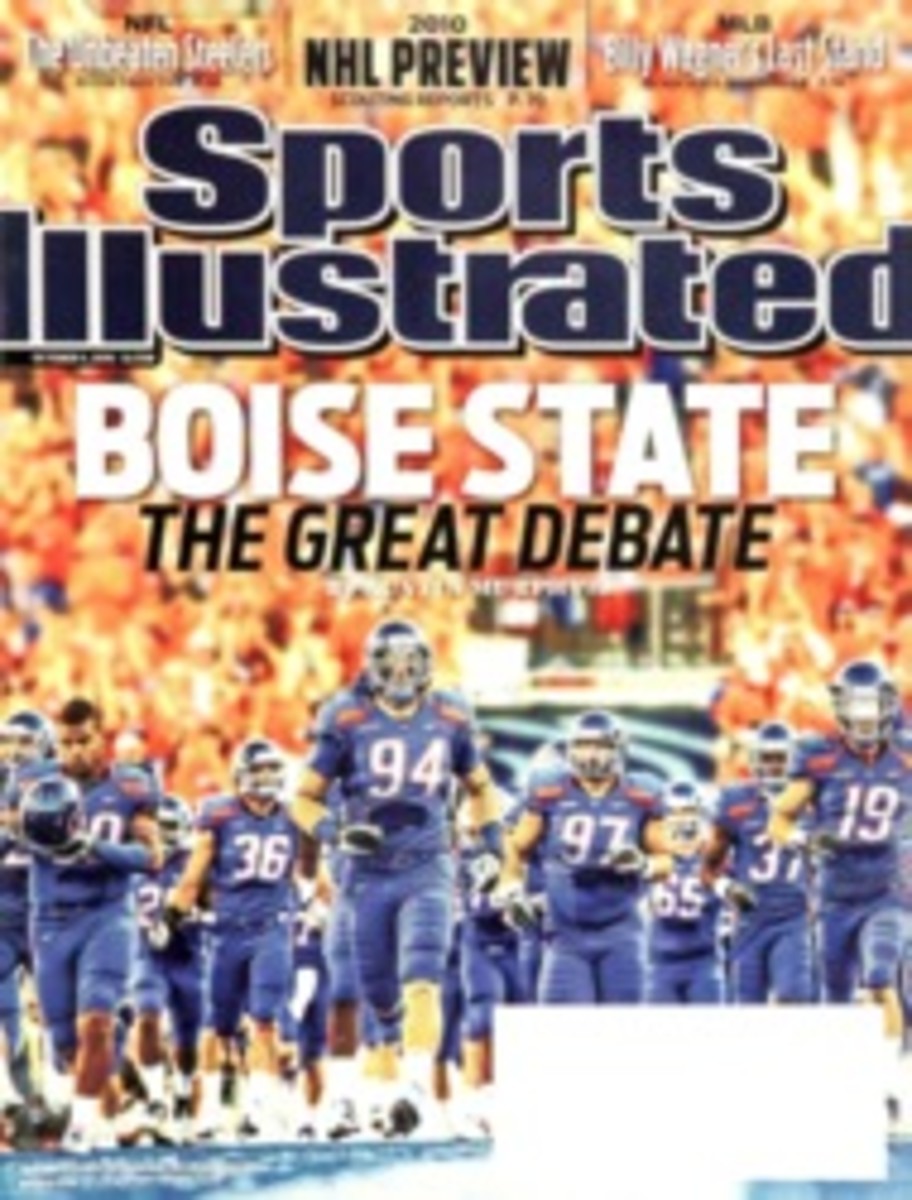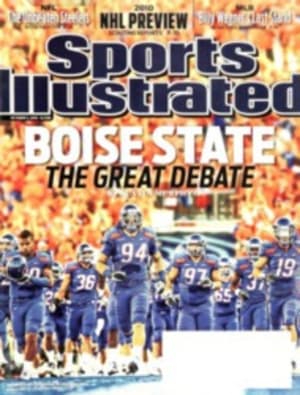
The New Bronze Age
Behold the unsplintered glory of Tim Treebow. Outside Ballyhoo Grill, a popular hangout along University Avenue in Gainesville, Fla., customers are greeted by a seven-foot-high statue of Tim Tebow carved from a dead oak tree by a chain-saw artist in 2009. Although its inspiration has moved on to Denver in the NFL, people still want to have their pictures taken next to Treebow. It's a landmark. The wooden likeness of the former Florida quarterback, sculpted with a lumberjack's broad chest and a superhero's cape cascading down its back, has the number 15 painted on its jersey and JOHN 3:16 in the eye black. Treebow is a sturdy replica of Florida's most famous grad, standing alone without an offensive line, needing no one for protection except maybe the Orkin Man. Kids climb on it. College students raise a glass to it. Boosters slip dollars into its fists. (Note to NCAA: Last item was a joke.) It's fun and kitschy, an orange-and-blue vessel of college spirit, the perfect level of homage due a 23-year-old NCAA hero. It's a notch above the Bo-Jackson-in-a-Heisman-pose quilt made of beer-bottle labels I once saw in an Auburn dorm room, a degree below the bronze statues that have recently popped up on college campuses.
In our celebrity-worshipping culture, every collegiate star gets a statue. At Oklahoma, coach Bob Stoops and the NFL's No. 1 draft pick of 2010, Sam Bradford, are soon to be cast next to Sooners legends such as Billy Sims. In Tuscaloosa, Alabama's Nick Saban is about to join Wallace Wade, Frank Thomas, Bear Bryant and Gene Stallings, all national-title-winning coaches, on the Walk of Champions outside Bryant-Denny Stadium. The deification of Saban, who's still a work in progress, led The Atlanta Journal-Constitution to wonder, "Is his birthday a holiday now, too?" Well, first things first. The mid-August unveiling of Saban's well-coiffed likeness has been postponed, 'Bama officials say, with no new date set. (Apparently joyless expressions take longer to sculpt.)
Why the rush to Rushmore? Shouldn't there be a statue of limitations on immortalization? Not long ago, bronzing was reserved for the bookends of life: booties at birth and busts in death. That doesn't mean memorials to the departed don't sometimes raise eyebrows. As in a Rorschach test, you see what you want to see in them: George Steinbrenner's freshly minted plaque in Yankee Stadium's Monument Park is either a bigger-than-life dedication to an iconic owner or an oversized, disembodied Boss lording over Ruth and DiMaggio (and every Yankees employee) in a George Costanza nightmare. The Arthur Ashe statue outside the eponymous stadium at Flushing Meadows, site of the U.S. Open, is either a classical interpretation of a powerful and graceful transformative figure in mid-serve or a Rodinesque depiction of an anonymous athlete in need of a fig leaf. Whatever one's opinion of the art, posthumous honors usually are embraced as deserving tributes. Bronze never came cheap. It was earned after a life's work, not after three years as a starter or in the third year of a coaching contract.
The rapid immortalizing of the living is disturbing. As The Wall Street Journal recently opined, the emergence of statue gardens on university campuses is evidence of "a new era of blind extravagance and euphoric self-congratulation" in college athletics. No doubt there are better uses of funds—even if most of the statues are paid for by private donations—at institutions of higher education that are clipping coupons to keep the computer labs open. No doubt there should be monuments to campus stars in the arts and sciences before we god up the ESPN highlight makers.
What we are also witnessing is the use of the assembly-line statue as a vanity tag for programs as they seek to woo recruits. Why else would the Gators dip Tebow in bronze so soon? On the west side of Ben Hill Griffin Stadium at Florida Field, the university will be unveiling three Heisman heroes after this season. At a cost of $550,000—using no state or school funds, as Florida communications director Steve McClain notes in an e-mail—the images of Steve Spurrier, Danny Wuerffel and Tebow will stand in front of the handsome brick facade. But it seems as if, given what everyone knows about Tebow, being carved from wood is more his style, says Brad Bedson, part owner of the Ballyhoo, whose restaurant has been frequented by the flesh-and-blood version. It's natural.
Wood is organic. Bronze can be fool's gold. The new statue craze leaves college athletic programs open to one undeniable risk as the NCAA continues to strip-search suspects: What if Alabama or Oklahoma has to surrender wins under Saban or Stoops? What if a Gators team of the Tebow era falls afoul of NCAA investigators? As we've seen, it can take years for violations to be revealed. USC can count itself fortunate not to have poured six figures into a Reggie Bush replica.
What the industrialized college programs need to do is hit pause on sculpting deals, to allow careers to emerge in full. Of course, big-time football factories have a hard time with restraint. For those universities hell-bent on instant deification, two words: ice sculptures.
Talk Back
If you want to comment on Point After or suggest a topic, send an e-mail to PointAfter@si.timeinc.com
Why the rush to Rushmore? Not long ago, statues were earned after a life's work, not after three years as a college starter or in the third year of a coaching contract.
PHOTO
JOHN BURGESS

